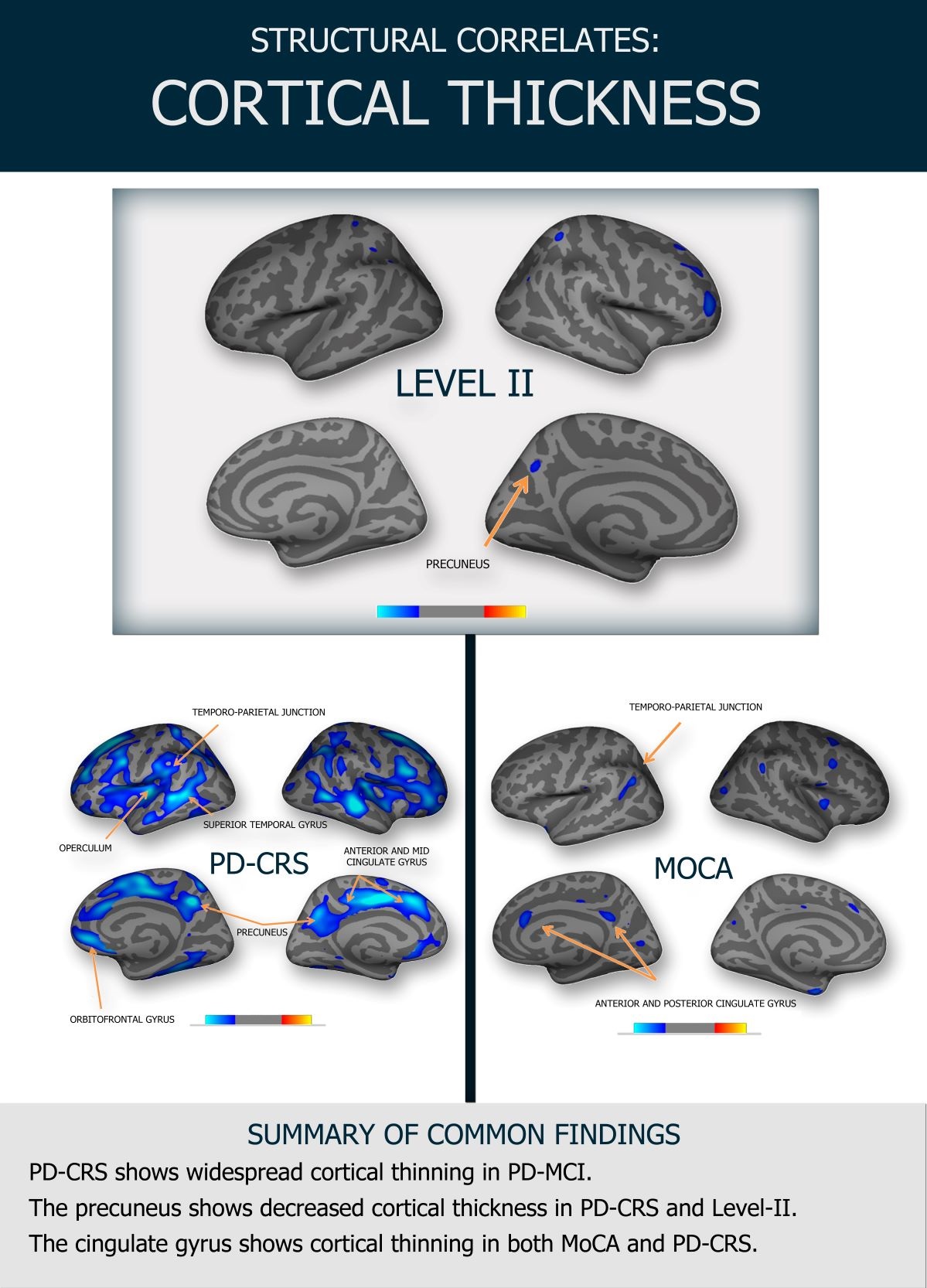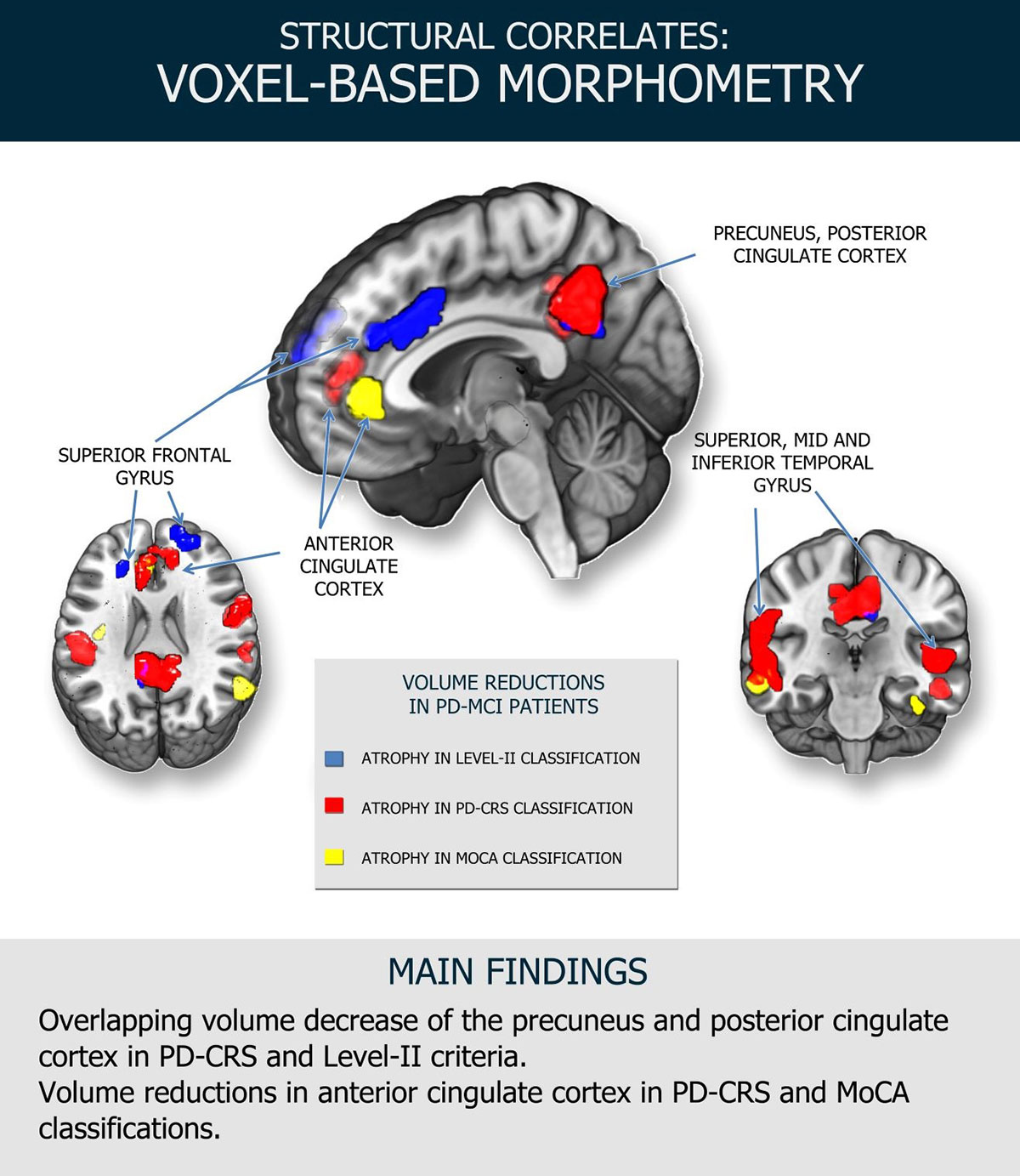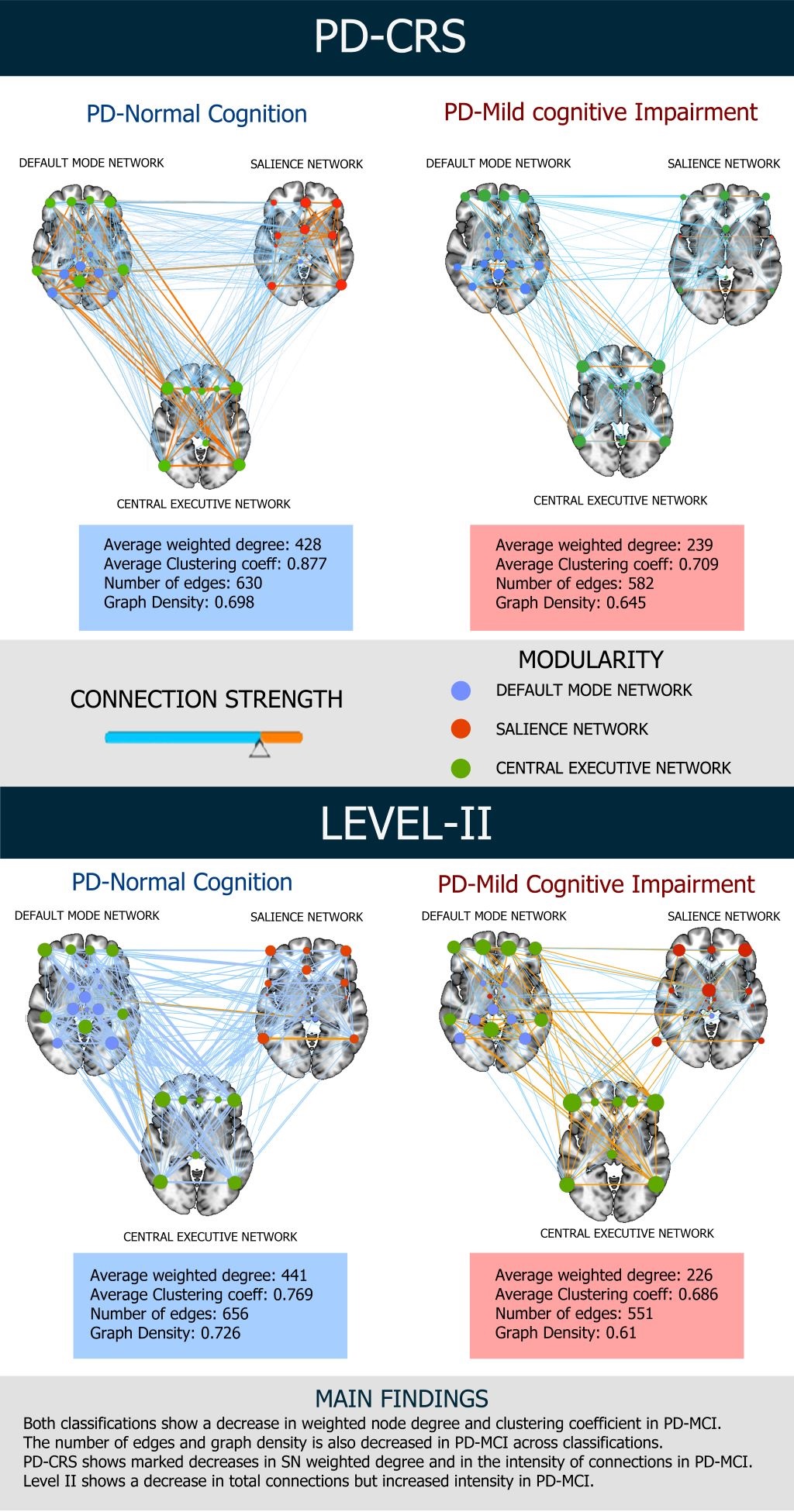Session Information
Date: Wednesday, September 25, 2019
Session Title: Cognition and Cognitive Disorders
Session Time: 1:15pm-2:45pm
Location: Agora 3 East, Level 3
Objective: To profile the neural correlates of neuropsychological assessment according to the Movement Disorders Society Task Force Criteria in its Level-1 and Level-2 recommendations
Background: Mild cognitive impairment in Parkinson’s disease (PD-MCI) is associated with consistent structural and functional brain changes. Whether different approaches for diagnosing PD-MCI are equivalent in their neural correlates is presently unknown.
Method: 53 consecutive non-demented PD patients were classified as PD-MCI according to: (a) comprehensive neuropsychological examination as operationalized by the MDS Task Force for PD-MCI (Level-2) and, (b) recommended global cognitive scales (Level-1; MoCA and PD-CRS). Voxel-based morphometry, cortical thickness and graph theoretical measures were obtained on a 3-Tesla MRI scanner.
Results: 18 patients (32%) were classified with PD-MCI with Level-II criteria, 19 (33%) with PD-CRS and 32 (60%) with MoCA. Though regions of atrophy differed across classifications, a gray matter decrease in the precuneus was found using both Level-II and PD-CRS classifications. Patients diagnosed with the PD-CRS also showed extensive changes in cortical thickness, concurring with MoCA in regions of the cingulate cortex, and again with Level-II regarding cortical thinning in the precuneus. Graph theoretical metrics showed decreases in weighted degree, clustering coefficient and graph densities in PD-MCI patients for both PDCRS and Level II, changes that were not apparent in MoCA classification.
Conclusion: Findings support the need for refinement of PD-MCI diagnosis to incorporate neuroimaging methods. Clinical and neuroimaging commonalities between the PD-CRS and level II diagnosis suggest that they could provide a more a confident diagnosis of true PD-MCI positive cases with a practical impact for patient management and sample selection in cognitive trials.
References: 1. Aarsland D, Kurz MW. The epidemiology of dementia associated with Parkinson disease. J Neurol Sci [Internet]. 2010;289(1–2):18–22. Available from: http://dx.doi.org/10.1016/j.jns.2009.08.034 2. Litvan I, Aarsland D, Adler CH, Goldman JG, Kulisevsky J, Mollenhauer B, et al. MDS task force on mild cognitive impairment in Parkinson’s disease: Critical review of PD-MCI. Mov Disord. 2011;26(10):1814–24.
To cite this abstract in AMA style:
I. Aracil-Bolaños, F. Sampedro, J. Marín-Lahoz, A. Horta-Barba, S. Martínez-Horta, JM. González-de-Echávarri, J. Pérez-Pérez, H. Bejr-Kasem, B. Pascual-Sedano, MA. Boti, A. Campolongo, C. Izquierdo, A. Gironell, B. Gómez-Ansón, J. Pagonabarraga, J. Kulisevksy. Neural correlates of Level-1 and Level-2 diagnostic criteria for Mild Cognitive Impairment in Parkinson´s disease. [abstract]. Mov Disord. 2019; 34 (suppl 2). https://www.mdsabstracts.org/abstract/neural-correlates-of-level-1-and-level-2-diagnostic-criteria-for-mild-cognitive-impairment-in-parkinsons-disease/. Accessed December 16, 2025.« Back to 2019 International Congress
MDS Abstracts - https://www.mdsabstracts.org/abstract/neural-correlates-of-level-1-and-level-2-diagnostic-criteria-for-mild-cognitive-impairment-in-parkinsons-disease/



